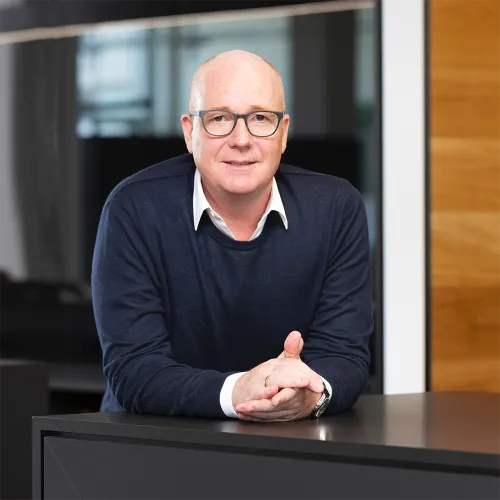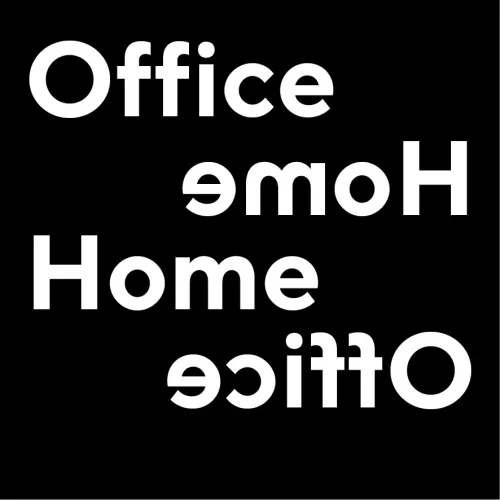Back to the office: What is the secret to success? CSMM presents a whitepaper with success factors for a hybrid workplace
Workplace design as a success factor: a whitepaper on the potential of hybrid work models
Starting 20 March 2022, working from home is a thing of the past. But the experience has left us with some new insights and ways of working that promise to become much more than a trend – in fact, they are likely to fundamentally change the future of work. When we were forced to work from home, it quickly became clear that remote work offers an opportunity to do our jobs anywhere, not just at home or in the office. In this whitepaper, architecture and consulting firm CSMM offers some innovative solutions for contemporary and visionary working models based on recent “new work order” projects completed during the pandemic. Society has started to see itself in a completely new way, and today’s companies are facing some tough questions as a result. How will workplace design change with fewer people working in the office? What will it take to ensure employees working remotely can still collaborate in an efficient and productive way? What kind of incentives can we offer to get employees back to the office?
A lot of today’s companies find themselves in a sort of interim “limbo”. When staff finally return to the office, we will no doubt be confronted with the same spatial and socio-cultural deficits our traditional working models have always had. Up to 80 percent of our workplaces are still purely places of necessity designed for linear workflows. That doesn’t give employees much incentive to come back to the office.
When it comes to designing modern workplaces, it is about a lot more than just finding a smart balance between working from home and at the office or between collaborating with a team and working alone. An intelligent workplace design should help companies adapt their spaces quickly and efficiently to constantly changing demands. Particularly since working from home is gaining traction, we see a lot more routine tasks take place in the virtual space. The challenge now is to redesign and revitalise the office as both a physical and a virtual space. Based on our experiences with recent projects, we have found that successful workplace design always puts the needs of the employees first. They play a decisive role, particularly in times like these when safety and precautionary measures are so vital. The well-being of staff and their ability to work together creatively and efficiently both have a direct impact on company success.
In the following five theses, CSMM outlines the potential and the opportunities of the new world of work – if we find the right balance between working remotely and in the office.
–––––––––––––––––––––––––––––––––
How important will it be to work from home in future?
Thesis 1: It’s all in the mix – working from home is more of a smart extension to the office rather than a substitute. Digitalization allows us to take part in virtual meetings from home with no restrictions. And the home office, used in a targeted way, can also provide the perfect place to retreat for tasks that require extra concentration.
Working from home has ushered in a brand-new world of work for many companies. This was particularly true for those companies that didn’t believe their workflows were suited to agile models – they found new, exciting opportunities in the shift to remote work.
That said, a system introduced and set up as a stopgap solution can hardly be called a serious strategy for the future. Working from home, as we have learned, has its limitations for staff. Some may lack the right ergonomic equipment or additional space in the home for an office; others may feel torn between family and professional responsibilities. We also mourned the loss of chance meetings with colleagues and other essential perks of office life. Ultimately, we believe working from home will remain a fixture of the new work order and likely become quite a viable alternative in certain scenarios. Home is where we can retreat for deep-concentration tasks without having to miss virtual team meetings. Companies also stand to score points with staff when they introduce models with trust-based working time.
Reduce the office footprint or restructure the workplace design in a practical, purpose-driven way?
Thesis 2: Sharing is caring – the future of workplace design is in the flexible, dynamic use of our existing offices; Over the last few years, we have seen numerous workplace models inspired by the sharing economy. These innovations are gaining popularity in everything from cars to flats and we can apply them to the workplace as well.
We expect the focus to shift from personalised workstations to more situational set-ups that allow teams to share the office infrastructure in future. Today more than ever, the office should not be seen as a static entity, but rather a holistic construct that goes beyond simple room design. Workflows, the diverse needs of staff and the infrastructure within the company will play a decisive role in our modern workplaces and their design. We need more spaces for chance meetings and complex teamwork, because the less we focus on routine tasks, the more complex issues come to the fore. Spaces designed for flexible use can easily be transformed into a small island of calm or an agile space for collaboration. The question companies should be asking is not how much office space you can cut, but rather what you are trying to achieve with the workplace and what features of a contemporary space will help make your workflows become more agile and more productive.
What role do people play in workplace design?
Thesis 3: Your employees should be the focus when you design an office space. After all, they are the ones who will use the space and make it their own, which is a big part of the way customers experience your brand.
The viewpoint of the people working for a company should be at the heart of every workplace design concept. Their individual needs play a central role in the space, shaping the staff’s ability to use the space and to feel both at ease and motivated. That is why there is no one-size-fits-all standard – every workplace design is different, and it is the people working there who bring the space to life, both individually and collectively.
Architects and workplace designers have the important job of making the people, their needs and their collaborative workflows the priority when they design both structures and spaces. Today’s workplaces are no longer simply a hub for professional exchange; people also see the workplace as a place for community. As working from home becomes a fixture of the new work order, our workplaces must now more than ever fulfil a socio-cultural mission as well. If the past 18 months have shown us anything, it is that employees need a professional home that gives them a sense of purpose, a sense of belonging within the company and a safeguard against the sense of isolation that can arise in the home office.
How can we foster creativity among our staff and make the work environment healthier and more efficient in the process?
Thesis 4: Companies are discovering the potential of workplaces designed to be “places of possibility” – serendipity as a design principle. Chance meetings and eureka moments that foster innovation and creativity.
As a place of possibility, the workplace becomes a tool for its users based on the serendipity principle. It creates opportunities for chance meetings, which not only foster innovation but also help strengthen the sense of belonging and the social cohesion among staff. The stage is set for spontaneous dialogue, creative thinking and a deeper kind of reflection; the workplace automatically becomes more appealing as a result. An inspiring workplace tailored to the needs of employees and their workflows enhances the well-being and the efficiency of each individual employee and therefore also drives business performance. It is a place people look forward to returning to and a place conducive to a different type of work than the home office.
How do we create future-proof workplace designs that will last, even when we change the way we work?
Thesis 5: Corporate design that inspires a sense of belonging from the façade to the interior design: To create a hybrid workplace that is equipped for whatever the future holds, we must take a holistic approach to the design.
To create a work environment that will stand the test of time, we must consider economic issues as well as the environmental and socio-cultural implications of our workplaces. Using environmentally friendly materials and prioritising solutions that save energy and resources will make a workplace sustainable over the long term. Creating spaces designed for flexible use is a matter of sustainability as well. The office of the future adapts to the needs of different tenants or to the changing needs of a company and follows the cradle-to-cradle principle when it comes to renovation and demolition. Our challenge is to create the best possible environment for every user. Architecturally, the solution is to create hybrid buildings that suit a variety of purposes while also offering a high-quality environment. The office of the future is a multi-purpose complex that is not just a place to work, but also a place where you can drop your kids to day-care, play sports or practice yoga, grab a drink or a bite to eat. These complementary places of possibility can increase the appeal of your brand and foster communication between among the employees of the different tenants on site.
Media contact
hicklvesting
Contact: Nicole Vesting
Kurfürstenplatz 6, 80796 München
Tel: +49 (0)89 45 23 508-11
Fax: +49 (0)89 45 23 508-20
E-Mail: nicole.vesting@hicklvesting.com
www.hicklvesting.com
CSMM Contact
CSMM – architecture matters
Contact: Nina Eisenbrand
Werk 3, Atelierstraße 14, 81671 München
Tel.: +49 (0)89 960 15 99-0
Fax: +49 (0)89 960 15 99-99
E-Mail: marketing@cs-mm.com
www.cs-mm.com



